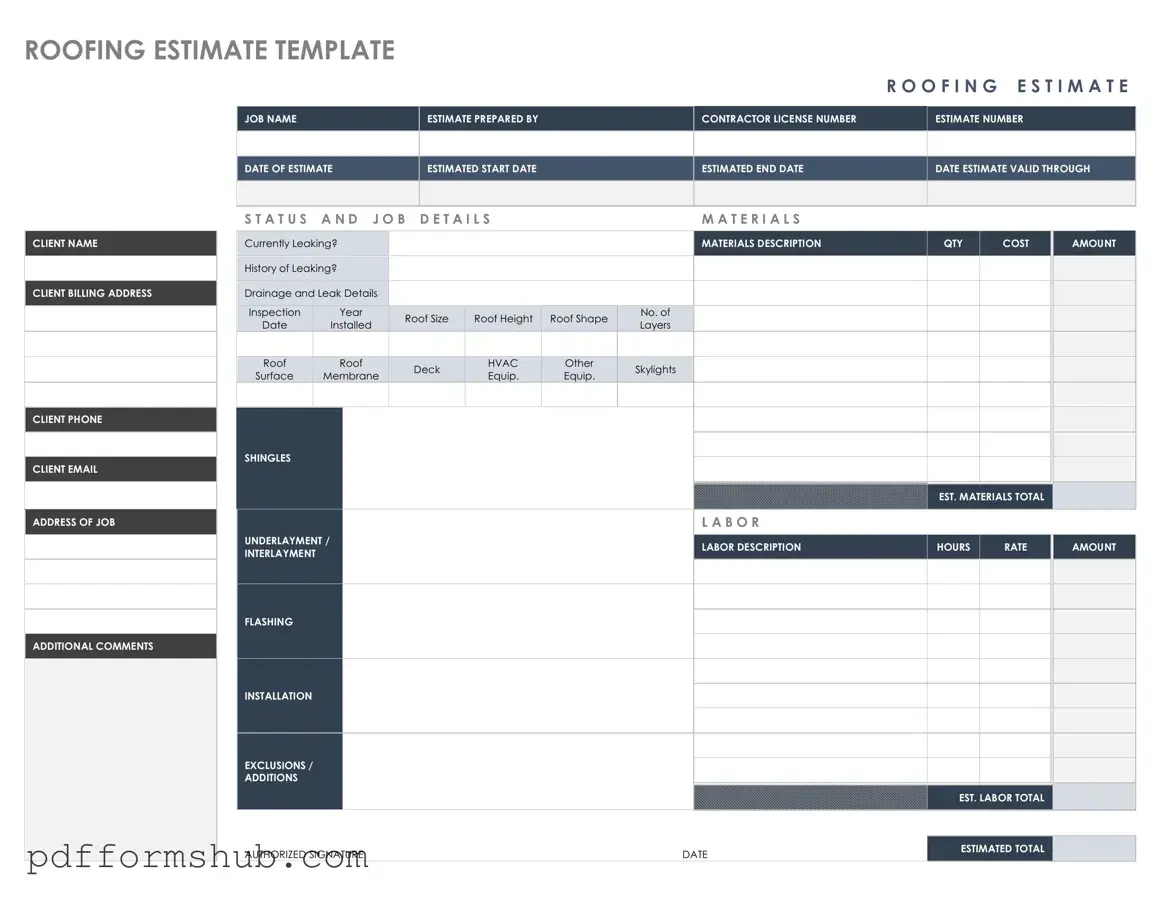Fill in Your Roofing Estimate Form
A Roofing Estimate form is a crucial document that provides homeowners with a detailed breakdown of the costs associated with roofing projects. It serves as a tool for evaluating potential expenses and helps ensure transparency between the homeowner and the roofing contractor. Understanding this form is essential for making informed decisions about your roofing needs.
Ready to take the next step? Fill out the Roofing Estimate form by clicking the button below.
Customize Form
